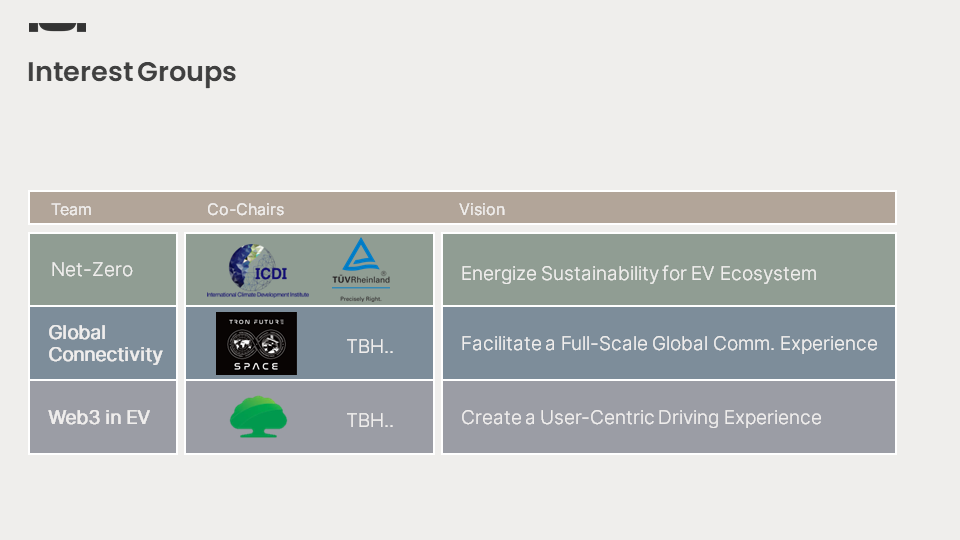Below are the Working Groups that MIH is calling for participation from the Contributor Members. Please note that only Contributor Members can join Working Groups. Contributor Members will receive an application form to the below Working Groups.
Working Group Process
Working Groups’ Latest Status
Working Groups

To focus on EV Powertrain developments, in areas such as efficiency and performance, weight, packaging layout, and electrical controls
Focus on lightweight, structural rigidity, production methods (3D printing), material and the control and isolation of Noise/Vibration and Harshness
To focus on managing the thermal efficiency and usage of an EVs, to satisfy the thermal needs for battery, motor, aircon and to provide better user experience through smart management
To define and design energy management systems including BMS, V2G, V2H, and Smart City adaptor layer for Smart Grid management, etc. and to work on battery technologies topics such as energy density, charging profile, and 5R
To bring vehicle dynamic behavior to the cloud, providing realistic conditions for autonomous virtual simulation
To define and develop cloud services in Automotive, focus on development tools, such as equipments and SDKs to enable easier EV component developments and software applications
To define and develop wire and wireless high-speed peripherals, QoS, real-time and seamless communication, 5G.
To design, develop and define EEA and related component functions, involving redundancies, efficiencies and performance to support the need of future EVs
To define and design middleware and runtime for achieving OS agnostic and deterministic processing for mission-critical applications and operating System for mission critical and non-mission critical
To define common interfaces, sensor fusion, edge computing, HD map integration for ADAS/AD features, and open up these features for developers to facilitate ADAS/AD development
To define security and attack prevention for the whole vehicle management and over-the-air connection standards, structuralize user identity detection and recognition functions, and to protecting it through decentralized network
To discuss applications for smart vehicle ecosystem and new use cases in the interior experience
To focus on the user experience that is introduced by new EV technologies, and to match the expectation of users
To standardize functional safety level and requirements, testing and certification standards for new EV related technologies